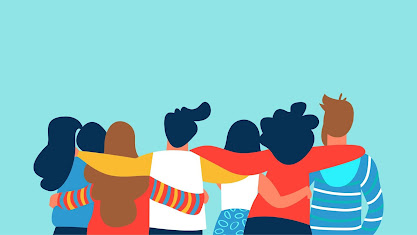Mairi, Yaniz
Clubhouses are based on a strong sense of community. But what makes a clubhouse a community? Robby Vorspan of Fountain House, the original clubhouse in New York City, wrote an article about this.
Vorspan recalled one of the first executive directors, John Beard, who wanted the clubhouse to be based on acceptance, inclusion, and appreciation of what each member could do. A community is where everyone is involved in the work ordered day. There were not meant to be “insiders” or “outsiders”. A community is where everyone is equal.
Vorspan gives some examples of destructive practices such as setting hierarchies, committees, power structures, and exclusive policies delineating who has greater power than someone else. Some examples include voting on who is allowed to join based on the personal criteria of the members, committees deciding who gets to participate in TE opportunities, and disciplinary policies designating acceptable and unacceptable behaviors. These structures and organizations may work for big companies, the government, and even churches, but for the clubhouse it is destructive in nature.
“When some members are placed in power and authority to make critical decisions over others, it automatically casts other members as the ones who are being judged and assessed as worthy enough or not.”
“Creating any kind of formalized system in the clubhouse that asks members to pass judgements upon one another eats away at the roots of one of the most fundamental values of the clubhouse community.”
The Standards tells us that anyone with a mental health illness should be welcome in the clubhouse. An open and welcoming environment for those with mental health illnesses embodies Beard’s vision of a clubhouse where its members gain a sense of belonging and value. Creating an inclusive community is not an option, it is a central mission of the clubhouse. Unconditional acceptance is a basic tenet of clubhouse membership.
To create and sustain a restorative community a clubhouse needs to be vigilant about this equality.
It is up to us, as a clubhouse and people, to build communities that invite, welcome, and heal, and not clubhouses that assess, judge, and exclude. If we fail to do so, none of the opportunities we offer, offer any real opportunities at all.
Reference:
What makes a Clubhouse Communities True Clubhouse Communities?
By Robby Vorspan, ICCD
13IS Plenary Session



No comments:
Post a Comment